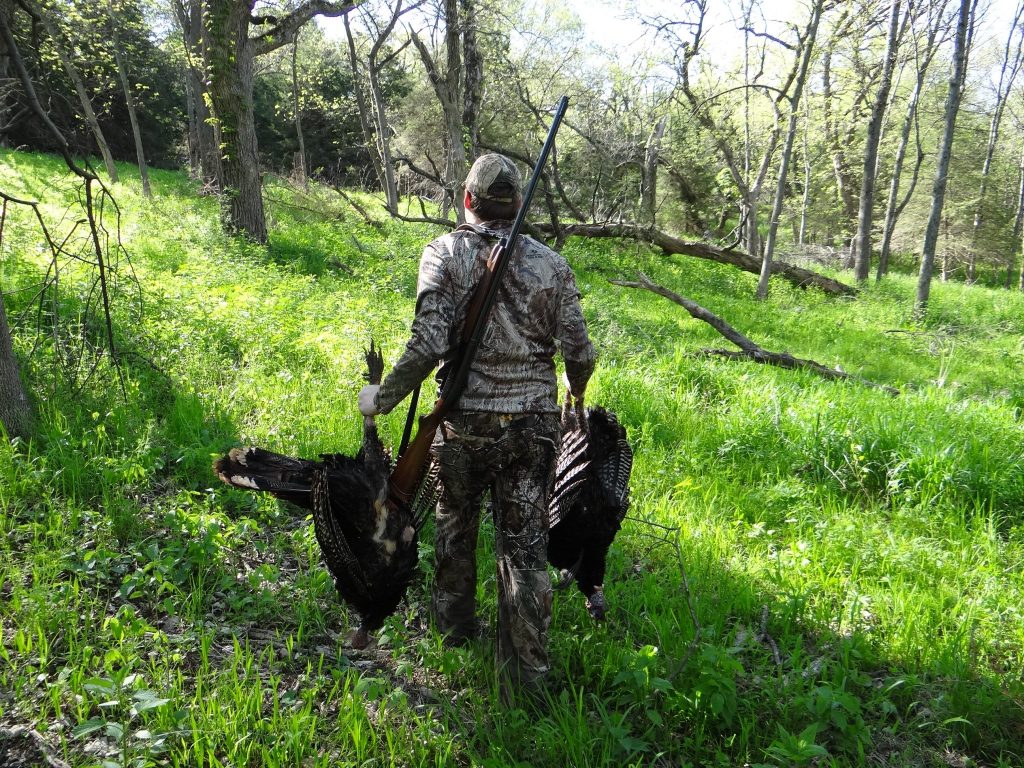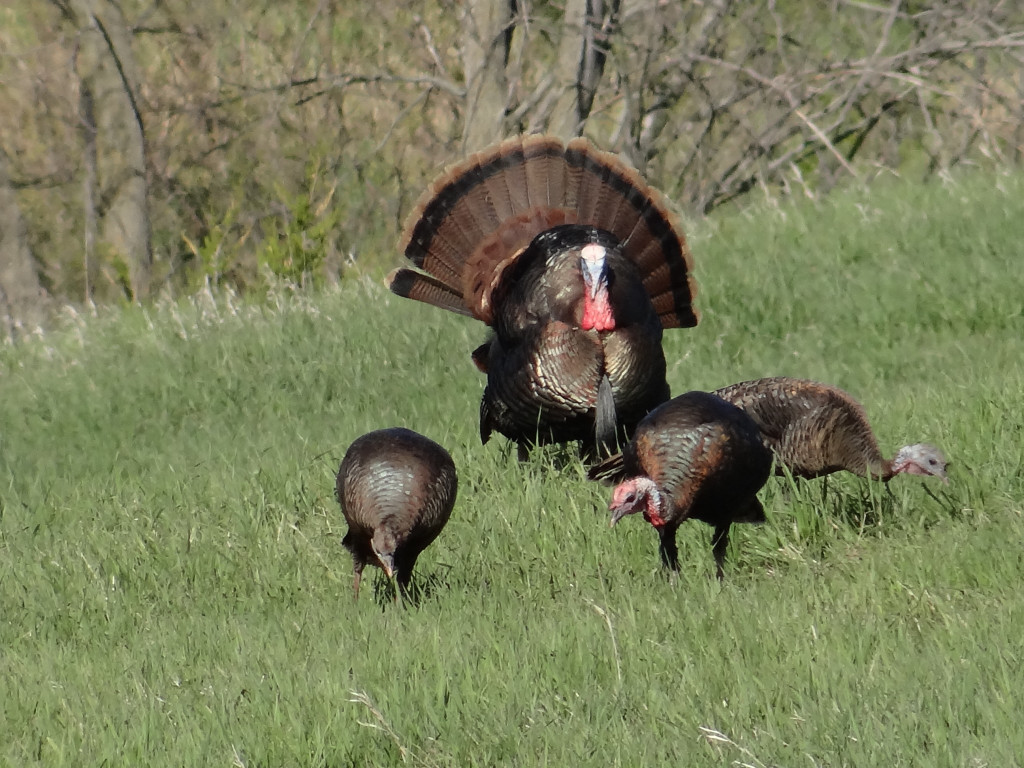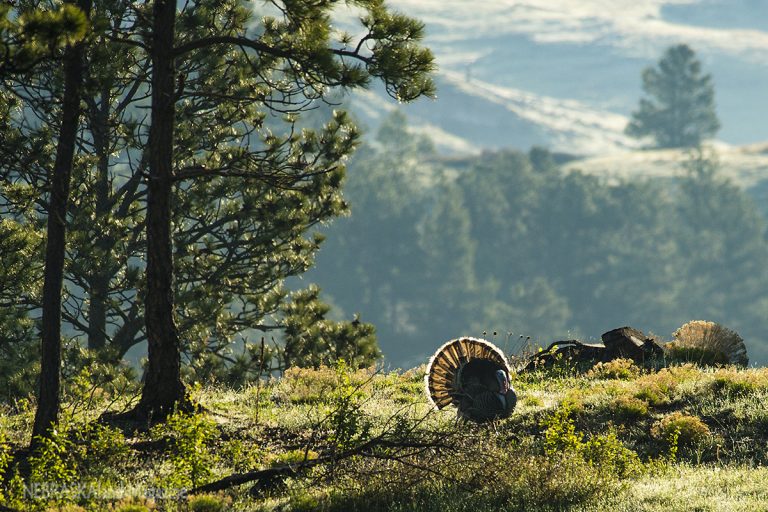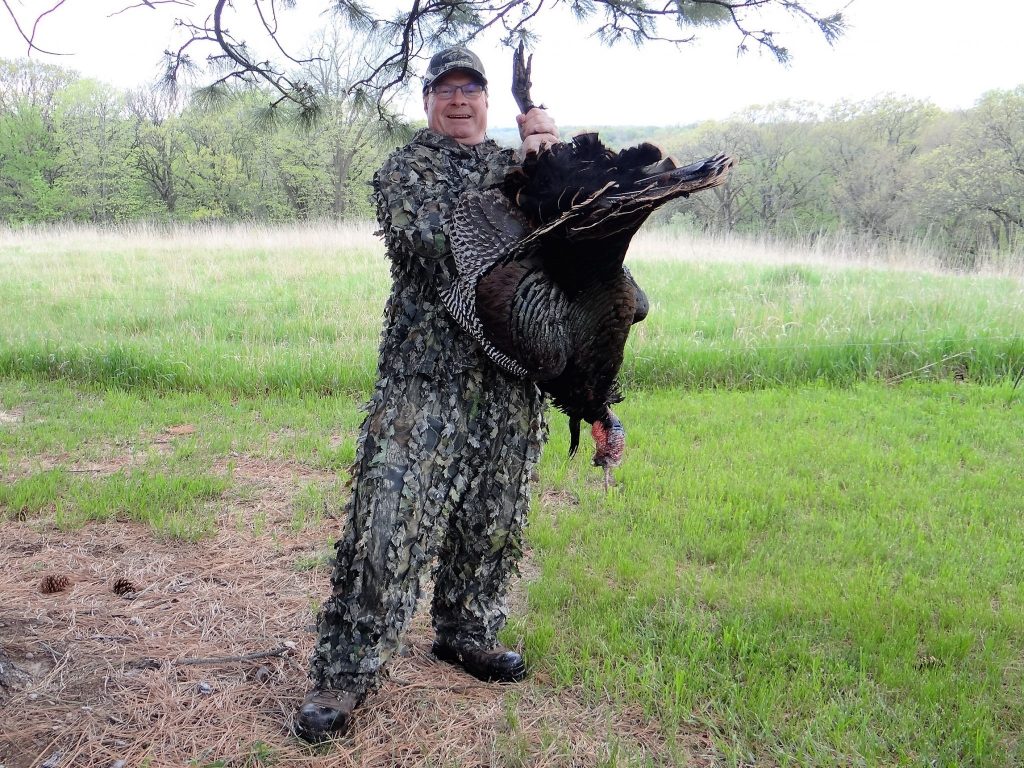So, your spring wild turkey hunting grounds along river bottoms have been flooded, huh? I am sorry to hear that.
The turkeys may or may not return to those river bottom grounds on a consistent basis. More than likely, severely flooded areas probably will be void of birds this season. It might be a good idea to do your homework and plan your route for heading for the hills. But maybe you have never hunted the rolling hills, steep grades and angled terrain with woody creek bottoms for wild turkeys.
Now you’re thinking: I know the basics of turkey hunting, but where do I begin this trek for turkeys and what is different about hunting hill country for those wily old gobblers and sneaky jakes? Hmmm …
Here are what some notable wild turkey hunting experts around the state and nation have to say about how to be successful when spring wild turkey hunting in hilly terrain:
Adam Kester, wildlife biologist and southwest district manager – private lands section – for the wildlife division of the Nebraska Game and Parks Commission and avid turkey hunter:
I enjoy hunting hills for turkeys in the spring. Some of the funnest hunts I have ever had have been in the hills.
In my region of southwest Nebraska, we have about 13,000 aces of publicly-accessible lands in the hilly terrain of southeast Lincoln County, NE to hunt with good numbers of turkeys. A dozen separate parcels of lands are available there. The big thing though: Do not overlook the smaller parcels of public land we have in that area or any other place in the state for that matter. These sites may only be a few hundred acres or less in size but they hold turkeys. These tracts generally do not get the hunting pressure that the larger areas do.

I would tell turkey hunters in the hills to really utilize our (Game and Parks) interactive online map atlas or a map app such as onX. Find the natural funnels where canyons or ravines converge. These are excellent pinch points that gobblers use, especially if they are more open.
Get to any hill country in the afternoon, if possible, and hike to the hilltops. Note where you are seeing or hearing birds. Either stay there or come back and listen for the turkeys taking the roost in the wooded creek bottoms and draws around sunset. Turkeys like to roost in mature cottonwoods, green ash and box elder trees in those bottoms.
You can also head out early in the morning and travel to the highest vantage point and listen for birds in the roost. Then, carefully set up near them.

Keep in mind that many public land hunters are like crappie anglers. If they have success one year, they will continue to come back to that same exact location year after year. That’s not bad but the message here is to not think like a typical public land hunter. Try new areas. Hunt weekdays and tougher weather conditions. Be willing to get further away from easily accessible spots.
Prepare to hike steep terrain, split up (if hunting with a partner), be nomadic, and safely run-and-gun, if need be, to improve your chances for taking a bearded bird.

Michael “Bubba” Schultz, longtime Midwest spring wild turkey hunter, non-commercial turkey hunting guide for newcomers, disabled veterans and youth and National Wild Turkey Federation member:
If you haven’t been out scouting, get out there and do it! Find the roost. If you don’t know where the roost is, your best bet is to get high on a ridge or hill for a few evenings near sunset, then listen and glass for the birds while they make a raucous flying up into their trees for the night.
When I’m hunting hills, whether rolling or craggy, I try to get to either the highest visual vantage point, or a good midway point with an opening where you can set up that has solid cover as a backdrop for you in a camouflaged ghillie suit or blind.
Besides watching closely, actively listen. You are going to probably hear turkeys before you see them. As a flock, those turkeys make a lot of noise among themselves. If they are in the immediate area, trust me, you will most likely hear them.

If you are using decoys, make sure the birds are coming from directions where they can see them right away. Calling turkeys up or even down hills is possible, but your chances increase if the gobbler can walk straight to your decoys without having obstacles in the way on a saddle, bench or side hill.

Dick Turpin, veteran turkey hunter, custom turkey call maker, retired administrator of the Nebraska Game and Parks Commission’s Law Enforcement Division:
When you hunt turkeys up in the hills, set up on a good vantage point. I like to stay there, get comfortable, be still, listen and watch. The birds will generally walk up to you. Many times when a gobbler comes in to the call they are looking, cautiously looking. His eye is in the top quarter inch of his head so he doesn’t have to show you much. He may just peer over a ridge like a periscope. If you are moving around, he’ll identify that in a second. The main thing is to remain as still as possible.
Calling too much is another mistake made up in the hills. Don’t constantly call. Periodically or randomly call. Be very patient and let the birds work to you. Just because you haven’t heard any toms gobble doesn’t mean they’re not around. Don’t give up too soon. I’ve taken many solo big toms in search of hens between 10 a.m. and 2 p.m.
Another thing: You need to thoroughly know your hunting area and the travel path the gobblers are most apt to take. Remember, those old toms are lazy and prefer the path of least resistance and maybe it’s the side of a hill that’s rather open.

It’s also important to have camouflaged clothing or a camouflaged blind that blends in with the foliage or vegetation of the landscape.
Those things are all important for a successful hunt in the hills.
In addition, let me say this: If you should ever find yourself being the hunted in hill country by another hunter, absolutely do not move. Waving or standing up will draw fire because movement is what the careless turkey hunter is looking for when they crest a ridge. Your best defense is to yell as loud as you possibly can. Shouting your name or “Don’t shoot” are good examples of what to do if that situation presents itself.
Brian Lovett, one of North America’s most accomplished wild turkey hunters, widely-known outdoor writer/author/editor and has completed at least two grand slams and a royal slam on turkeys:
I love hunting turkeys in hilly country. My number one tip would be to use the terrain to your advantage. Hills, bluffs, etc., shield your movements, letting you walk and call or maneuver closer to a turkey. This has many advantages, as you’re almost always better off being relatively close to a gobbler when trying to call him in.
Rolling terrain also provides ideal setups for shooting turkeys. By setting up within range of a small terrain rise — the crest of a rolling hill or lip of a ridge, for example — you make a gobbler search for the hen he hears. Further, you can then shoot the bird the instant it pops into view. Hilly country can present some challenges, too. For example, you might hear a gobbler sound off 150 yards away but be separated by a deep valley or creek bottom. In most cases, you’ll have to circumvent that barrier and get on the same ridge and same level as that bird to have a good chance to call him in. (They sometimes fly from ridge to ridge or hilltop to hilltop, but not all the time.)
Also, when walking, be sure to avoid sky lighting yourself by walking atop high, visible points or ridges. And always check carefully for birds when you top a terrain rise.

Ray Eye, professional, legendary wild turkey hunter, champion turkey caller, outdoor talk radio show host and one of our nation’s gurus for wild turkey hunting:
The best tactic I use for success in the hills involves roosting turkeys. Watch those turkeys roosting and note the direction where they flew up in the trees. Set up there the next morning in the dark on the same side where they took flight, and you’ll have a great opportunity for success.
One other thing that happens in hill country is that too many turkey hunters get skylighted. It’s awfully easy to walk down a trail road or path on top of a ridge with beautiful views and not realize that you have been busted by turkeys. When you’re on the top a ridge, any turkeys off the side of the hill will have skylighted you! Stay off the tops of those ridges, use a break in the hill or a slight rise on the trail road to set up where you can’t see that gobbler until you can shoot him.
If you don’t have turkeys roosted, and you’re going into an area after daylight, move slowly. Look, listen and call. Keep going until you hear gobbles. Never go straight toward the vocal gobbler, loop left or right using to terrain to hide your approach. Pause once a while give him just a little bit of a call so he will think the hen is coming to him. We have bagged a lot of gobblers this way.

IMPORTANT NOTES:
There is an array of publicly-accessible hunting lands in the hills of Nebraska, get more information about those here. For private land in hilly terrain, like any hunting, you must obtain permission from the landowner or their agent before entering the property. Follow the rules and treat all lands with complete respect. GW
The post Hunting The Hills For Your Spring Gobblers appeared first on Nebraskaland Magazine.














